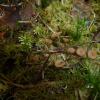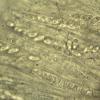
15-12-2025 15:48
 Danny Newman
Danny Newman
Melanospora cf. lagenaria on old, rotting, fallen

15-12-2025 15:54
 Johan Boonefaes
Johan Boonefaes
Unknown anamorph found on the ground in coastal sa

15-12-2025 21:11
 Hardware Tony
Hardware Tony
Small clavate hairs, negative croziers and IKI bb

15-12-2025 07:09
 Danny Newman
Danny Newman
indet. Rutstroemiaceae sp. on unk. fallen leavesMc

15-12-2025 07:05
 Danny Newman
Danny Newman
Pseudosclerococcum golindoi (det: Zotto)near Cosb

15-12-2025 11:49
 Danny Newman
Danny Newman
ITS sequences from the following two collections B

15-12-2025 12:34
 Danny Newman
Danny Newman
indet. Rhytismataceae on oak leafnear Purchase Roa

09-12-2025 12:06
 Andgelo Mombert
Andgelo Mombert
Bonjour,Je recherche l'article concernant Hypobryo

In the area of Telemark (southern Norway), at the touristic point of the Ravensjuv, we collected a Sclerotiniaceae on dead stems of Rubus chamaemorus (at least this was the only plant that could be regarded a possible substrate in the vicinity). So - I asked ant G and so I found the paper of Holst-Jensen & Schumacher. And - what a luck - there was a species that seems to fit perfectly: the spores with the two quite large polar drops as contents that also have the right size, the habit and the substrate, the excipulum of globulosa. Everything o.k. - But: I did the IKI-reaction and obtained deeply blue pori. Holst-Jensen & Schumacher, however, describe the pori as iodine-negative.
Who knows C. latipes and also has obtained blue pori?
Regards from Lothar

never saw this interesting species or photos of it. In only know Nina's pretty photos of Rutatroemia cf. chamaemori, which has much longer curved spores like R. echinophila. But typical R. chamaemori has spores similar as yours, though longer.
I assume you checked the excipulum of globulosa? Did you measure more spores?
There is a further mismatch in the protologue: How can a species be named latipes when it could better be called filipes or the like? I guess the stipe is max. 0.5 mm wide, not 0.7-2 mm. There must be some confusion, or?
Lothar, falls du eine pdf hast dann schicke mir sie doch (hab nur eine Papierkopei). Falls du Holm & Holm 1977 fungi on Rubus chamaemorus nicht hast, den schicke ich dir gerne.
Seid ihr wohl schon wieder zurück?
Zotto

Hi Zotto,
yes, the excipulum is globulosa, the asci have croziers. I did not measure more spores by now, but can do this still with my fotos.
Den Aufsatz habe ich mir im Internet herunter geladen (Research Gate), aber das Speichern funktioniert nicht richtig (Text ist dann verzerrt und unlesbar). So kann ich Dir das leider nicht zusenden, aber Du solltest es selbst ergoogeln können.
Holm & Holm habe ich nicht - würde ich gerne haben ;-)
Yes, we returned Monday. There were not many fungi growing - it was still early spring in Scandinavia! (most common fungus was Gyromitra esculenta).
Kind regards and thanks!
Lothar



